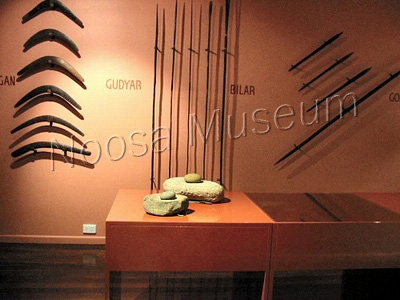Gubbi Gubbi Environment
Traditionally Gubbi Gubbi people believed that every animal, bird and rock that belonged to their group's totem species was in fact the actual living spirit of an ancestor.
As a result each member felt a definite kinship with that species. The totem, if it were a bird or animal, was never hunted or killed for food by the person whose totem it was.
The dyungungoo, or territory of the Gubbi Gubbi is a typically-sized area of the south coast. The seasonal nature of food resources meant that groups travelled over what seemed to non-indigenous people as a vast area.
Weather and seasonal variations affected shellfish supplies, and land-based resources needed to be used to supplement these short supplies. The seasonal availability of fruits, grasses and vegetables meant that groups travelled to these locations when necessary. This seasonal migration was a form of conservation.
By varying their diet to include everything in the area that was at all edible, the Gubbi Gubbi ensured that the one or two favoured food items would not cease to exist.
As a result each member felt a definite kinship with that species. The totem, if it were a bird or animal, was never hunted or killed for food by the person whose totem it was.
The dyungungoo, or territory of the Gubbi Gubbi is a typically-sized area of the south coast. The seasonal nature of food resources meant that groups travelled over what seemed to non-indigenous people as a vast area.
Weather and seasonal variations affected shellfish supplies, and land-based resources needed to be used to supplement these short supplies. The seasonal availability of fruits, grasses and vegetables meant that groups travelled to these locations when necessary. This seasonal migration was a form of conservation.
By varying their diet to include everything in the area that was at all edible, the Gubbi Gubbi ensured that the one or two favoured food items would not cease to exist.


